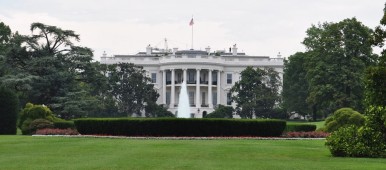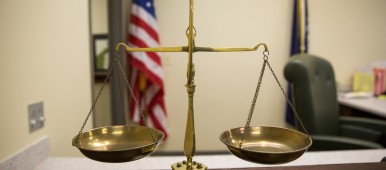
- Mediation
- Arbitration
- Court Neutrals
- Online Dispute Resolution
- Technology
- Court Decisions
- More
- Legislation
- Healthcare
- Guest Posts
- John DeGroote
- John C. Fleming
- Rick Freeman
- Professor Peter Friedman
- Honorable W. Royal Furgeson, Jr.
- James M. Gaitis
- Laura A. Kaster
- Professor John Lande
- Philip J. Loree, Jr.
- Michael McIlwrath
- F. Peter Phillips
- Professor Alan Scott Rau
- Professor Thomas J. Stipanowich
- Professor S.I. Strong
- Richard Webb
- Glen M. Wilkerson
- International arbitration
- Regulation
- Sports and Entertainment
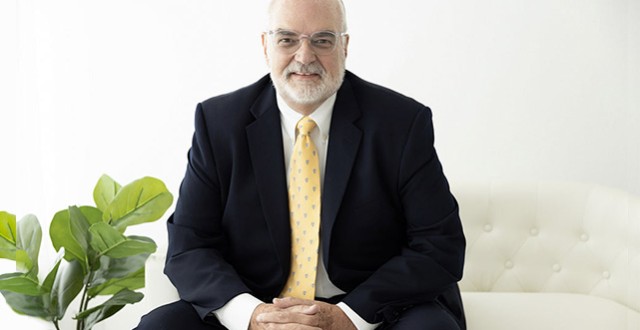 JAMS Welcomes Karl Bayer to its Panel of NeutralsJAMS, the world’s largest private alternative dispute resolution (ADR) provider, is pleased to announce that Karl Bayer
JAMS Welcomes Karl Bayer to its Panel of NeutralsJAMS, the world’s largest private alternative dispute resolution (ADR) provider, is pleased to announce that Karl Bayer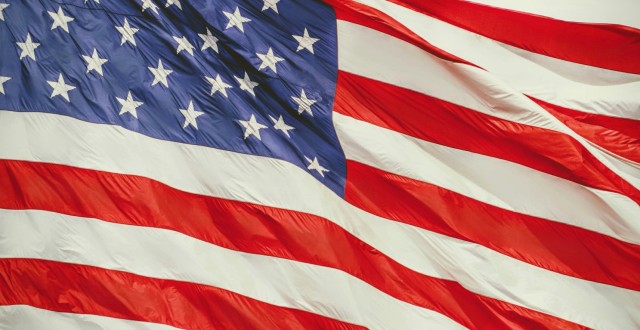 Class Action Waivers in Arbitration Agreements: The Twenty-First Century Arbitration Battleground and Implications for the EU CountriesLinda S. Mullenix, Morris & Rita Atlas Chair in Advocacy at the University of Texas School of Law, has written “Class Ac
Class Action Waivers in Arbitration Agreements: The Twenty-First Century Arbitration Battleground and Implications for the EU CountriesLinda S. Mullenix, Morris & Rita Atlas Chair in Advocacy at the University of Texas School of Law, has written “Class Ac Picking the Proper Technological Tool for Problem-Solving in ArbitrationProfessor Amy J. Schmitz, John Deaver Drinko-Baker & Hostetler Chair in Law and Co-Director of the Translational Data An
Picking the Proper Technological Tool for Problem-Solving in ArbitrationProfessor Amy J. Schmitz, John Deaver Drinko-Baker & Hostetler Chair in Law and Co-Director of the Translational Data An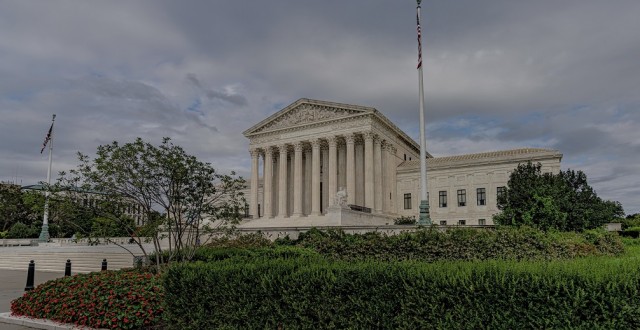 SCOTUS to Resolve Circuit Split Over Transportation Worker Exemption in the FAAToday marks the start of the United States Supreme Court’s new term. During the term, the nation’s highest court will re
SCOTUS to Resolve Circuit Split Over Transportation Worker Exemption in the FAAToday marks the start of the United States Supreme Court’s new term. During the term, the nation’s highest court will re
Recent Posts
Fifth Circuit Hears Oral Argument in Employers’ Stand-Alone Class-Action Waiver Case
For years, the United States Court of Appeals for the Fifth Circuit has maintained that a class-action waiver included in an employer’s arbitration agreement is enforceable.
Continue reading...International Implications of the Will as an Implied Unilateral Arbitration Contract
S.I. Strong, Manley O. Hudson Professor of Law at the University of Missouri School of Law, has published “International Implications of the Will as an Implied Unilateral Arbitration Contract,” 68 Florida Law Review Forum, 2016, Forthcoming; University of Missouri School of Law Legal Studies Research Paper No. 2016-21.
Continue reading...Three Petitions for Certiorari Filed Over Collective Action Bans in Employment Arbitration Agreements
On September 2nd, Epic Systems Corporation filed a petition for certiorari with the United States Supreme Court following a Seventh Circuit Court of Appeals ruling which stated a mandatory class action waiver included in an employer’s arbitration agreement violated the National Labor Relations Act (“NLRA”).
Continue reading...Executive Order Restricts Mandatory Arbitration of Title VII Claims for Some Federal Contractors
Two years ago, President Obama signed Executive Order 13673 – Fair Pay and Safe Workplaces (“EO 13673”). Section 6 of the order contains a number of pre-dispute arbitration restrictions that will become effective on October 25th of this year.
Continue reading...Arbitration
Martin H. Malin, Professor of Law and Director of the Institute for Law and the Workplace at the Illinois Institute of Technology’s Chicago-Kent College of Law, has published “The Three Phases of the Supreme Court’s Arbitration Jurisprudence: Empowering the Already-Empowered,” Nevada Law Journal, Vol. 17, 2016.
Continue reading...Mediation
By Don Philbin In this week’s The New Yorker, one of my favorite writers explores how “optimistic overconfidence” contributed to the quick downfall of the mighty Bear Stearns. Malcolm Gladwell, author of Blink, The Tipping Point, and Outliers, chronicles the meteoric rise of Jimmy Cayne, copier salesman turned professional bridge player turned investment banker, to the top of Bear Stearns. A student of history, Gladwell uses the British-led invasion of Gallipoli, Turkey to develop his premise – “as we grow older and more experienced, we overrate the accuracy of our judgments.” Despite a 10:1 troop advantage over the Turks for two days after an amphibious landing en route to Russia, British troops used that window to bath by the hundreds in the bright blue bay while their commander lounged offshore aboard a command ship. Ultimately, the Turks massed their troops and the battle was a spectacular defeat for the British, with high casualties on both sides. This “placid, prudent, elderly English gentleman” commander had undertaken a large-scale landing without a formal plan of operations, with half the recommended number of troops, and without howitzers, trench mortars, or grenades. The British had little experience with amphibious landings, yet this commander was willing to “wing it” based on his other experiences.Those other experiences ultimately did not help him adapt to the new terrain. Back in New York, Gladwell caricatures Cayne as a bluffer’s bluffer. Professional bridge led him to his second wife and to an interview with a high-placed executive at Bear Stearns. During the interview, bridge came up and Cayne was cocksure of his ability. Since bridge and the business of Wall Street are contests between teams, each of which competes over a “contract,” the Bear executive brought Cayne on. Since Cayne was a bridge master, he surmised that he would be proficient in banking too. Like the British commander, he was a good bluffer until the tide went out and he could not adapt to the new terrain. Bear Stearns was riding high in 2003 as other banks suffered that recession and Cayne rhetorically ask a Times reporter, “so you have to ask yourself, What can we do better? And I just can’t decide what that might be.” His (over)confidence continued to the end – Cayne played an inordinate amount of golf in Bear’s final months. Gladwell uses these examples to highlight what psychologists have been teaching us about optimistic overconfidence for years. Investment banking, like law to a certain extent, is a confidence game. The best bluffer is not the one who pretends she is stronger than she really is; it’s the one who actually believes herself to be stronger than she really is. The players who actually believe it are not as likely to give up subtle messages undercutting their perceived confidence. In the end, Bear Stearns failed because its transaction counterparties no longer believed its bluff. In litigation, forests are laid bare discovering ways to undercut overconfident assessments. But, as I wrote in The One Minute Manager Prepares for Mediation: A Multidisciplinary Approach to Negotiation Preparation, published at 13 Harvard Negotiation Law Review 249 (2008), we are all overconfident to different degrees – it’s the Lake Wobegon effect. In experiments, subjects take a less aggressive bargaining position with “dapper” dressers, think they can control computer-simulated stock markets that simply follow a program, discount small probabilities, assume luck runs in their favor, and distort unattractive consequences. Over 80% of interviewed entrepreneurs described their chances of success as 70% or better, and 33% described them as “certain.” That compares with a five-year survival rate for new firms around 33%. Couples about to be married estimated their chances of later divorcing at zero, even though most know that the divorce rate is between 40% and 50%. Negotiators in final arbitrations overestimated the chance that their offer would be chosen by 15%. Surveys find the Lake Wobegon above-average effect across demographics – college professors, high school students, truck and taxi drivers, and even negotiators. Although most negotiators believe that they are more “fair” than average; in specific mediations they tend to overestimate their trial alternatives. Advocates naturally focus attention on case assets while under-appreciating weaker issues. Myopically focusing on the strengths of a case blurs our focus on less favorable points. Focusing tightly on the merits of the case also increases the risk of undervaluing the transaction costs associated with continuing to trial. If we are all imbibed with varying degrees of confidence and that confidence opens a spread between the bid and ask prices of homes, cars, and lawsuits, how can we systemically account for that bias and other psychological barriers to efficient deals? Third-parties inject a different dimension. We take more aggressive bargaining positions with those we dislike or oppose us. In fact, a Cold War experiment quantified the magnitude of the reactive devaluation bias we have to an opponent’s offer. Soviet leader Gorbachev made a proposal to reduce nuclear warheads by one-half, followed by further reductions over time. Researchers attributed the proposal to President Reagan, a group of unknown strategists, and to Gorbachev himself. The surprise was not that the group reacted differently to the same proposal depending on its source, but the wide range of difference. When attributed to the U.S. President, 90% reacted favorably. That dropped only marginally when attributed to the third-party (80%), but in half (44%) when attributed to the Soviet leader. Mediation systemically reduces optimistic overconfidence and reactive devaluation. After a cathartic telling of their story, parties often move to a hard-headed look at whether their alternatives to a negotiated deal realistically best the offer on the table.The trick is to develop those future scenarios iteratively, without losing the party acclimating to a different altitude.“What if” questioning and graphical representations of various alternatives move parties from an emotional look-back at historical events to a problem-solving look at future options. The other side may really be Darth Vader. But the question is, how does that fact change future options? Mediators can build on the […]
Continue reading...Healthcare Disputes
Legal Research
About Disputing
Disputing is published by Karl Bayer, a dispute resolution expert based in Austin, Texas. Articles published on Disputing aim to provide original insight and commentary around issues related to arbitration, mediation and the alternative dispute resolution industry.
To learn more about Karl and his team, or to schedule a mediation or arbitration with Karl’s live scheduling calendar, visit www.karlbayer.com.






